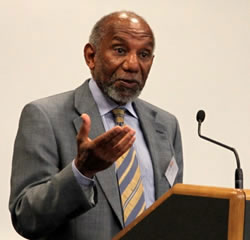History Chase Program

Felton Earls, Principal Investigator, Program on Human Development in Chicago Neighborhoods (1990-2005)
Child Health and Social Ecology (CHASE) originated during a study of neighborhood influences on child development. That study, the Project on Human Development in Chicago Neighborhoods, demonstrated that collective efficacy is a protective factor against violence, low birth weight, asthma and a number of other outcomes associated with well-being. We define social ecology and propose that "the relationship of children to community life represents an essential future direction for public health science and practice as it applies to child health". As CHASE evolved to become an international project, it has continued to refine ideas and practices involving children’s participation in the generation of collective efficacy. Children develop the skills and confidence to educate and mobilize their communities around the most important health issues based on children’s participatory rights, as defined in the United Nations Convention on the Rights of the Child (CRC). CHASE has elaborated a theory of the child as a deliberative citizen who is socially integrated into local community settings.
To test this proposition CHASE has prepared a formal curriculum, known as the Young Citizens Program. The CRC, adopted by the UN General Assembly in 1990 changed the way we viewed children from that of “subjects” to that of "citizen" with rights and deserving of genuine participation in the life of the community. This new view and respect for a role for children in civil society is covered in detail in a volume titled “The Child as Citizen”. This volume edited by Felton Earls, is described in his introductory chapter, Children: From Rights to Citizenship, along with the abstracts of all volume chapters. There is also an interview with Earls about the Volume: The Next Step from Child Rights is Citizenship (2011).